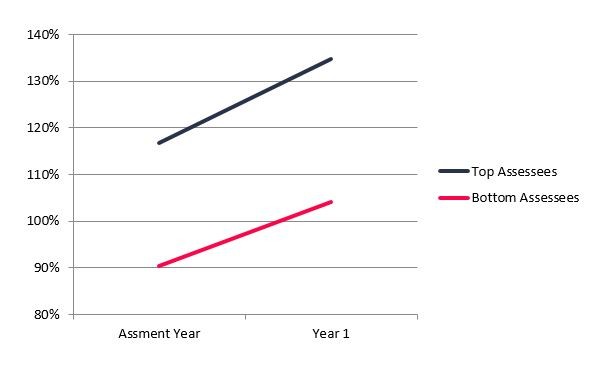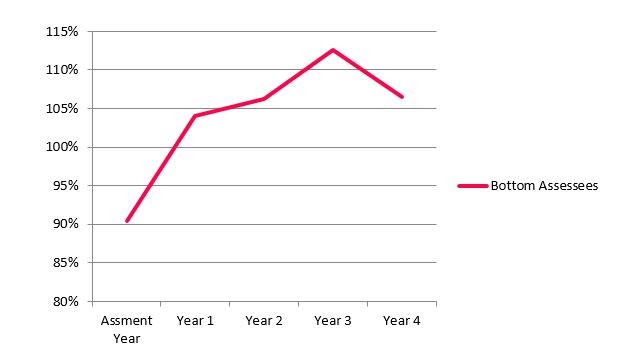“This story has a surprising twist, but it did not look very happy when it started. Four years ago, senior management at my company decided to audit the capabilities of the sales team (which I was on). My adventure started in a mid-western sales office, where my boss’ boss and a consultant had scheduled a two-and-a-half-hour assessment. To prepare for this meeting I had received a case study, which pretty much resembled a typical case in the market I call on. I used it prepare a presentation for them, where I pointed out which accounts I would pursue and which accounts I would service later based on my analysis of the case.
The assessment did not go very well. I did not really find my own presentation and argument convincing, and it made me wish that I had read a couple books on strategic selling prior to getting up there. The assessment wasn’t just the presentation, though – it also included two role plays with difficult customers and internal personnel.
The whole process was very realistic, and I felt as if it were a real day on the job. At the same time, I was concerned that I did not sparkle. I really was struggling through this assessment…honestly, in the same way I was struggling through my typical workday. I knew that it hadn’t gone great, so I tried not think much about it after it was over. I also hoped that management was honest when they said that I had nothing to fear, regardless of my performance.
This all changed four and a half months later. My manager sat down with me and informed me of the devastating (but not fully unsurprising) results of that assessment experience – I had tanked it.
I knew I hadn’t done great, but tanked it?! I was floored – how could it have come to this?
In the following months, things changed significantly in my job. The company changed out my manager, and the new guy actually paid a lot of attention to me. He helped me better understand this industry and cleared up some product questions I had never been able to figure out.
In the following years I actually started to enjoy my job, and even became successful. My manager, and even the regional head, coached and supported me, and even discussed how I could present to prospective accounts. Just recently, four years after my awful experience during the assessment, I was considered a top performer in the country.”
This anonymized but authentic account of a sales rep demonstrates the benefits of a well laid out organizational intervention – and how you don’t have to “nail” the assessment to reap these benefits. In this specific example, about six months prior to the assessment, BTS had conducted job analysis interviews with over a dozen of this company’s best performing job incumbents. We used that information to design a concise Great Profile, which detailed what great performance looked like in the context of this industry’s practices and this specific organization’s culture. Specific and applicable, the Great Profile provided the foundation for the assessment experience. The realistic job simulation was used for the complete sales rep population, and engaged district managers as assessors.
Observing sales reps going through a highly realistic assessment simulation demonstrated to these managers where the sales reps had strengths and gaps in their capabilities. Based on the assessment, a report was produced which became a useful tool for talent discussions between the local sales manager and their reps. The final outcome of that process was an individual development plan for each rep.
While the assessment effectively identified the people who would perform best in the following year, there was also a cohort of reps who performed poorly on the assessment (See Chart 1). Some of these low-performers retired or moved into other positions. While only about half of the low rated reps stayed in the role, none were formally laid off. Those who remained received focused development plans – and, as the opening story details, most flourished with that focused support.
Some interesting things happened to the remaining low performers. They did not reach the level of performance of the top performers as identified by the assessment center, however they improved to an above average level and sustained it for the next 4 years, as is shown in Chart 2.

CHART 1: Sales performance change after the assessment

CHART 2: Sales performance of low assessed sales reps
Working with the Great Profile for sales reps and focusing on the key behaviors that drive performance, the company invigorated the whole sales force. In addition to driving improved performance, they launched a hiring campaign, again leveraging the Great Profile to select and on-board sales personnel that fit the job requirements and the company. As a result, the company clearly outpaced their industry in four consecutive years, as shown in Chart 3.

CHART 3: Company performance compared to industry performance
In summary, there are a number of simple conclusion you can take away from this adventure:
- Do not count out all bottom performers – some of them will thrive with the right development support.
- Get line management as close to the assessment as possible – their involvement ensures effective use of the data.
- Always begin with the end in mind – Define the “great” standard from the start. That standard will help with the design of assessment, selection and development content.